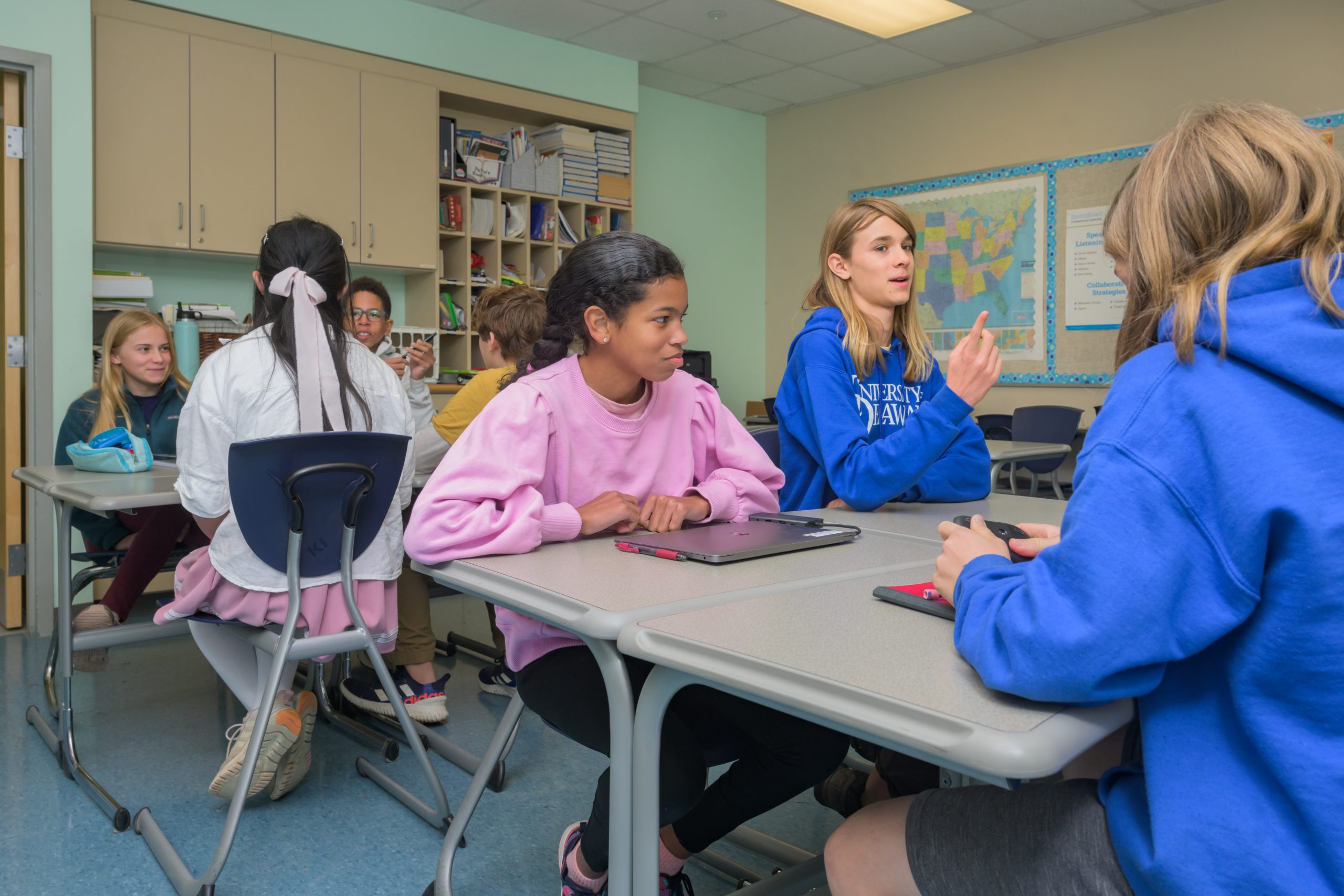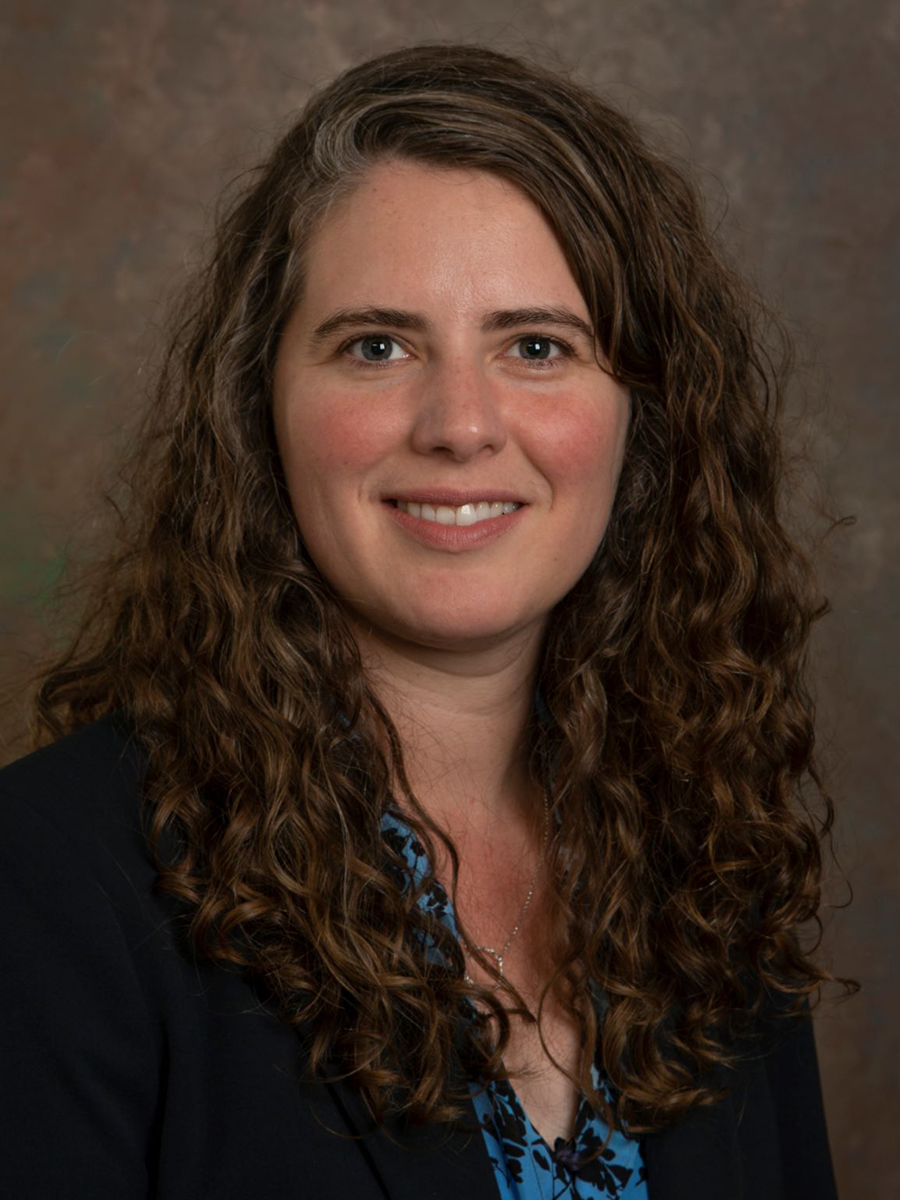Research Spotlight: Sarah Curtiss

New research from University of Delaware assistant professor shows how universal learning design improves accessibility and learning outcomes for all students
Puberty education can be uncomfortable for many students and teachers, given the sensitive and sometimes emotionally-charged nature of the content. The barriers to this important health topic can be even greater for students with disabilities, who may struggle to learn in a traditional, lecture-style classroom. With these challenges in mind, University of Delaware Assistant Professor Sarah L. Curtiss has turned to Universal Design for Learning (UDL), a pedagogical approach that helps educators meet the needs of all students through interactive lessons and self reflection.
In one of the largest studies to date on the effects of UDL instruction, Curtiss and her co-authors examine the impact of a UDL approach to fifth-grade puberty education in comparison to a traditional, lecture-style format. After analyzing survey results from more than 2,000 students across 30 schools, they found that students who received the UDL approach showed higher levels of self-competence in relation to puberty topics than those who did not. Self-competence, which refers to a student’s ability to evaluate their own skills, helps students feel more successful and autonomous in the classroom, which improves motivation and academic performance.
“In our study, the vast majority of children benefited from learning about puberty, but it was exciting to see that we could modify instruction to help them feel more competent,” said Curtiss, who specializes in special education within UD’s College of Education and Human Development. “Our hope is that this sense of self-competence will translate to a better sense of health and well-being down the road.”
Universal Learning Design
Since many school districts work with educational agencies to provide puberty education, Curtiss and her co-authors partnered with a community health education organization to offer a four-day puberty workshop to fifth grade students with and without disabilities. They adapted the organization’s workshop to the UDL framework, which allowed students to set flexible learning goals, delivered information in multiple formats, incorporated interactive lessons and taught students to assess and reflect on their own learning. For example, the UDL educators used Nearpod, a digital tool that lets teachers create interactive slides that include real-time quizzes, games, commenting functions, video and more.
“Using Nearpod was awesome,” one of the UDL educators said. “I just saw how interactive and more fun the lessons can be, just because our traditional teaching method was very lecture format. So this gave [us] the opportunity to have the students be involved.”
Importantly, UDL educators also offered their students emotional and goal-setting check-ins at the end of each day, allowing students to share their personal successes and challenges with the material.
“One of the simple things we implemented was being clear with students about what the learning objectives were and then having them check in at the end of the lesson on whether they thought they were achieving those goals,” said Curtiss.
Facilitating learning for all students
At the end of the workshop, Curtiss and her team found that students who received UDL instruction demonstrated greater self-competence than their peers in the traditional setting. This finding makes sense: UDL students were able to self-monitor their learning, report their misunderstandings in real-time and assess their progress toward specific learning goals during check-ins. Educators were then able to respond to their students’ feedback by reviewing tricky material or supplementing their instruction before the end of the workshop.
Significantly, Curtiss and her colleagues did not find any differences in knowledge outcomes between the two groups of students. All students demonstrated a high level of knowledge in relation to puberty topics after the workshop. Some UDL educators noted that the interactive elements of UDL slowed down their instruction; they couldn’t move through slides as quickly and grappled with technology or classroom management challenges. But Curtiss’s study shows that students do not necessarily learn more with traditional approaches, even though passive learning may allow educators to deliver more content.
“Curtiss’ study underscores the powerful impact of UDL as an approach that uplifts all students,” said Andrea Glowatz, director of CEHD’s The College School, which serves students with and without learning differences in grades 1-8. “Deeper engagement, autonomy and self-competence are goals in every classroom. Curtiss’ findings remind us that when instructional time is crammed with content, students lose opportunities to think critically, ask questions and process information. UDL’s strategies may take more time, but they honor the ways students truly learn and create space for their own growth.”
“This study was only possible because of our community collaborators,” said Curtiss. “They were dedicated to providing excellent health education.”
To learn more about CEHD research in disability and inclusion, visit its research page. To learn more about the services UD provides to individuals with disabilities, their families and professionals who support them, visit CEHD’s Center for Disabilities Studies.
Article by Jessica Henderson. Photos by Evan Krape and Maria Errico.
About Sarah Curtiss
Sarah Curtiss is an assistant professor in CEHD’s School of Education, specializing in special education. Her research explores how to develop programs for autistic youth that foster resilience, facilitate positive development and are grounded in lived experience. Throughout her research, Curtiss situates autistic youth in context—in families, communities, schools, service systems and cultures. This research includes projects on human sexuality education, social skills, family mealtimes and the transition to adulthood.
Curtiss’ research complements the work of CEHD faculty studying disability and inclusion including Tia N. Barnes, Al Cavalier (emeritus), Stephanie Del Tufo, Steven M. Eidelman (emeritus), Laura Eisenman, Allison Jackson, Nancy C. Jordan, Sarah B. Mallory, Beth Mineo, Jessica Namkung and Kristen Ritchey, as well as CEHD‘s Center for Disabilities Studies.




